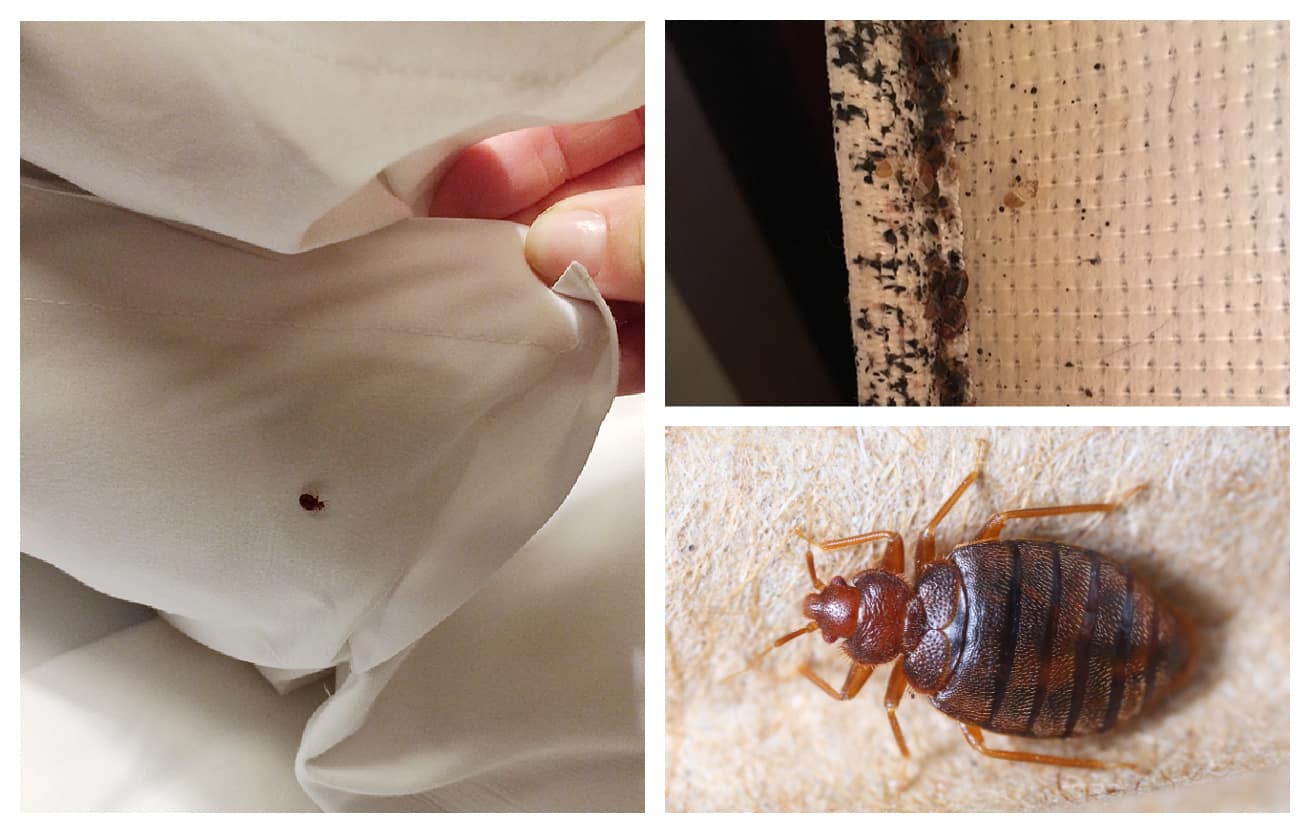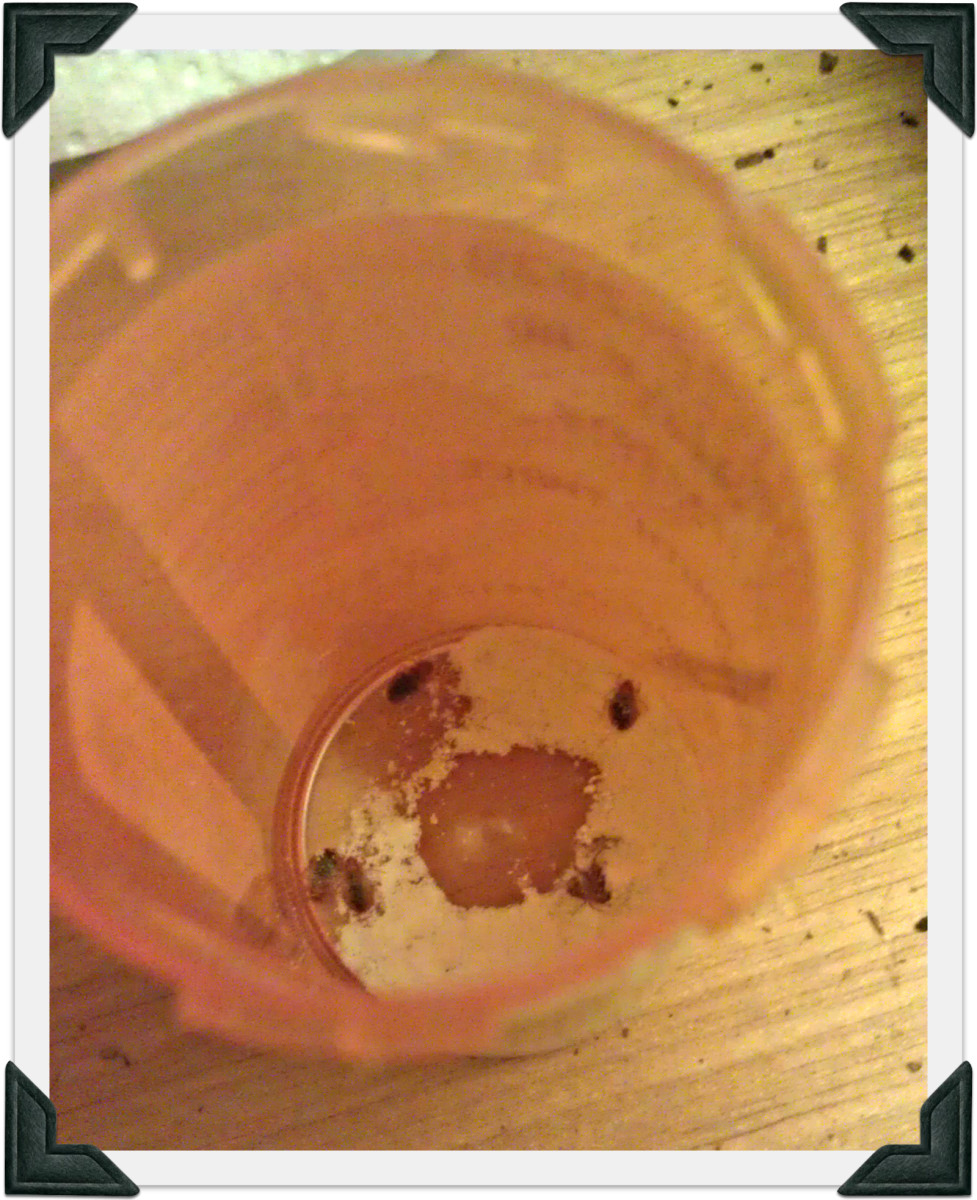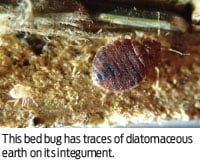Diatomaceous Earth typically takes 7 to 17 days to kill bed bugs. It works through physical abrasion and dehydration, affecting their exoskeleton and leading to their death.
Effective pest control is essential for homeowners dealing with bed bug infestations, and Diatomaceous Earth (DE) stands out as a popular option. This natural, non-toxic powder can be a critical part of your bed bug eradication strategy. Targeting both adult bed bugs and their larvae, DE offers a safer alternative to chemical pesticides, making it ideal for use in homes, especially around children and pets.
Its ease of application allows for thorough coverage in bed bug-prone areas, such as mattress seams, box springs, and baseboards. Demonstrating both efficacy and safety, Diatomaceous Earth emerges as an environmentally responsible choice for tackling these persistent pests. As you incorporate DE into your pest control regimen, patience is required, since it does not provide immediate results but rather ensures a gradual decline in the bed bug population over a couple of weeks.

Credit: www.everydaycheapskate.com
The Perils Of Bed Bugs
Bed bugs are tiny creatures with a big impact on comfort and health. They hide during the day and emerge at night to feed, leaving itchy, red bites on humans. Knowing how to combat these pests is essential. Diatomaceous earth is a popular option, but understanding its effectiveness requires a look into bed bug behaviors and the risks they pose.
Traits Of These Pesky Pests
Bed bugs are masters of hide-and-seek, making them hard to spot. They prefer dark crevices close to their food source — us.
- Size: Small, about the size of an apple seed.
- Color: Reddish-brown, becoming redder after feeding.
- Lifespan: Several months to a year, in ideal conditions.
- Reproduction: Rapid, with females laying hundreds of eggs.
These pests are not just annoying; they are survival artists.
Health Concerns And Nuisance
Bed bug bites can cause skin irritation and sleep disruption. Some individuals may experience severe allergic reactions.
| Impact | Details |
|---|---|
| Allergies | Itching, hives, or even anaphylaxis. |
| Sleep Loss | Interrupted sleep due to itchiness and discomfort. |
| Mental Health | Stress and anxiety from infestations. |
Diatomaceous earth works over time, penetrating the exoskeletons of bed bugs, which leads to dehydration and death. This process can take several days to weeks, depending on the level of infestation and how effectively the diatomaceous earth is applied.
Diatomaceous Earth Unveiled
Discovering the secret weapon against bed bugs might just surprise you. Diatomaceous Earth (DE), a natural mineral, is emerging as a must-have in the battle against these pests. Inexpensive and effective, DE is the go-to for many looking for a solution that doesn’t involve harsh chemicals.
Nature’s Insecticide
Derived from fossilized algae, DE is a gift from Mother Nature herself. It’s a powder that’s safe for humans and pets but lethal for insects. Known for its drying properties, DE is a natural insecticide that doesn’t rely on toxic elements to do its job. It tackles various pests, with bed bugs being just one on its hit list.
How Diatomaceous Earth Works On Bugs
When bed bugs come into contact with DE, the fine powder wreaks havoc on their exoskeletons. Here’s how:
- DE clings to bugs, which creates tiny abrasions on their outer layer.
- It absorbs the oils and fats from the bug’s cuticle.
- Without this protection, the bugs dehydrate and die.
This process doesn’t happen instantly. It requires patience as DE takes time to work its magic. The exact duration depends on factors such as humidity, temperature, and the extent of the infestation.
For those eager to reclaim their space from unwanted tiny intruders, layering a thin spread of diatomaceous earth around affected areas is a strategic move. Keep in mind that the area should not be wet as moisture reduces the effectiveness of DE.
Mechanics Of Diatomaceous Earth Against Bed Bugs
Wondering about diatomaceous earth and its power against bed bugs? This natural, non-toxic powder is a bug’s nightmare. Below, discover how it works its magic.
Physical Impact On Bed Bugs
Diatomaceous earth (DE) is made from fossilized algae. When bed bugs come into contact with DE, it sticks to them. Sharp edges cut through the bug’s exoskeleton. These tiny cuts are fatal for bed bugs.
DE affects both adults and younger bed bugs. It even targets the unhatched eggs. Due to its physical action, bugs can’t develop resistance. It remains effective as long as it’s in place. Using DE is a smart move in the battle against bed bugs.
The Desiccation Process
After DE cuts the bug’s exterior, the desiccation starts. This means it dries them out. Bed bugs cannot survive without moisture. DE absorbs the oils and fats from the bug’s shell. This leads to dehydration. Without these vital fluids, bed bugs die.
Time is a factor here. It could take up to seven to seventeen days for full effectiveness. Results depend on the amount of DE and the environment. A dry setting speeds up the process. Keep DE distributed where bugs hide for best results.
Application Tips For Diatomaceous Earth
Are you battling bed bugs? Diatomaceous Earth (DE) is a natural pest control that can help. To make it work, you must apply it correctly. Here are expert tips on using DE effectively in your fight against these pesky critters.
Strategic Placement
DE must be placed where bed bugs crawl. Target their hideouts:
- Mattress seams and tags
- Box springs and bed frames
- Furniture joints and crevices
- Baseboards and carpet edges
- Behind electrical outlets
Apply a thin layer. Bed bugs must contact DE to die. A heavy coat might discourage them from walking through it.
Safety Measures During Application
DE is safe but always wear protective gear:
- Use a dust mask to avoid inhaling DE
- Wear gloves to protect your hands
- Keep pets and children away until DE settles
Only use food-grade DE for safety. Avoid using pool-grade as it is harmful to breathe.
Time Frame For Diatomaceous Earth Efficacy
Understanding how quickly diatomaceous earth can address your bed bug problem is crucial. Time Frame for Diatomaceous Earth Efficacy is key to setting realistic expectations. Diatomaceous earth is a natural pest control remedy, but patience is necessary. Let’s explore the factors affecting its kill time and what you can typically expect.
Factors Influencing Kill Time
- Amount: More powder may mean faster impact.
- Application: Proper spread ensures better contact.
- Bed bug lifecycle: Different stages may affect speed.
- Humidity: Less moisture usually means quicker results.
Diatomaceous earth does not kill bed bugs instantly. It works by damaging their exoskeletons, which leads to dehydration. The effectiveness depends on direct contact. Thus, a thorough application is critical. Remember, it’s not a quick fix.
Average Duration For Results
So, how long does it take? While results vary, a general timeline can be laid out.
| Days | Observed Effect |
|---|---|
| 1-2 Days | Begin exposure |
| 7 Days | Some bugs die |
| 2 Weeks | Increased deaths |
| 4 Weeks | Near-complete elimination |
On average, expect to see the first results within a week. Full effectiveness usually occurs around four weeks. Persistent application and patience are critical for success. Remember, it’s a gradual process that requires consistent effort.

Credit: dengarden.com
Comparative Effectiveness Of Diatomaceous Earth
When battling bed bugs, diatomaceous earth (DE) stands out for its natural approach. This fine powder is a game-changer. It works by damaging the exoskeletons of bed bugs, causing dehydration. Knowing how it stacks up against other methods is crucial. Let’s explore this comparison to understand its role in pest control.
Diatomaceous Earth Vs. Chemical Pesticides
Understanding the duel between DE and chemical pesticides is key. DE is a natural, non-toxic option. Chemical pesticides often include harsh compounds. These can harm people and pets if not handled properly. Below is a breakdown of how these contenders fare:
| Factor | Diatomaceous Earth | Chemical Pesticides |
|---|---|---|
| Safety | High | Varies |
| Speed | Gradual | Fast |
| Resistance | Low risk | High risk |
| Environment | Friendly | Possible risk |
Pros And Cons Of Natural Insecticides
Natural insecticides offer a gentle touch in our fight against pests. DE leads the charge with distinct advantages and some limitations. Here’s a snapshot:
- Pros:
- Safe for humans and pets
- Eco-friendly
- No resistance buildup in bugs
- Multi-purpose uses around the home
- Cons:
- Longer to take effect
- Requires direct contact
- Less effective in humid conditions
Integrating Diatomaceous Earth Into Pest Control
Diatomaceous Earth (DE) stands as a mighty warrior in the battle against bed bugs. A natural, non-toxic powder, DE offers a simple yet powerful method to oust these pesky critters. Emptying the contents of DE onto areas where bed bugs roam, works wonders in pest control strategies. Once incorporated, patience is key; while DE starts its work immediately, it requires time to claim victory over bed bugs.
Complementary Measures For Bed Bug Eradication
To ensure effectiveness, blend DE with an array of pest control tactics. Consider the following:
- Regular vacuuming: Suck up any loose bugs before they escape.
- Steam cleaning: High heat can kill bed bugs on contact.
- Wash fabrics: Hot water can help eradicate bugs from linens.
Applying DE after these steps improves its power to wipe out bugs. Remember to replenish DE after each cleaning to maintain its bug-killing might.
Best Practices For Home Infestations
To maximize DE’s potential in your home, follow these steps:
- Identify infestation hotspots where bed bugs hide.
- Apply a thin, even layer of DE to targeted areas.
- Use protective gear, like masks, to avoid inhaling DE.
- Keep DE dry; effectiveness drops if it gets wet.
- Leave the DE undisturbed for at least 7 to 10 days for optimal results.
- Repeat the treatment as needed to ensure total eradication.
Monitoring the situation and reapplying DE is essential. Watch for signs of continued bed bug activity. Patience is crucial; DE can take a week or two to fully eliminate bed bugs.
Real-world Evidence And Testimonials
When talking about diatomaceous earth (DE) and bed bugs, nothing speaks louder than real-world evidence and testimonials.
Success Stories In Battling Bed Bugs
Cautions And Considerations From Users
While success stories abound, users also share important advice:
| Caution | Consideration |
|---|---|
| Food-Grade DE Only | Use only food-grade DE to ensure safety, especially around children and pets. |
| Avoid Overuse | Applying too much can repel bugs instead of killing them. |
| Protective Gear | Wear masks to avoid inhaling DE, as it can irritate lungs. |
Users emphasize patience and persistence for best results with DE.
Maintaining A Bed Bug-free Environment
Maintaining a Bed Bug-Free Environment is crucial after dealing with an infestation. Leveraging diatomaceous earth can bring relief in the battle against these pests. But, it’s not just about eradicating them; it’s about keeping them at bay permanently. Implementing robust prevention and monitoring strategies is essential. This ensures your space remains bed bug-free for the long haul.
Preventive Strategies
Establishing a zone of resistance against bed bugs keeps your home clean and secure. Here’s a checklist to follow:
- Quality Mattress Covers: Encase mattresses and pillows to trap potential bed bugs.
- Clutter Control: Keep your space tidy to reduce hiding spots for pests.
- Regular Cleaning: Vacuum regularly to remove any insects or eggs from your floors.
- Seal Cracks: Close gaps in walls and baseboards to block entry points into your home.
Continuous Monitoring And Management
Active surveillance keeps bed bugs from returning. Follow these ongoing steps:
- Inspect beds and furniture frequently for signs of bed bugs.
- Use bed bug traps under furniture legs to catch any stragglers.
- Clean linens in hot water and dry on high heat to kill any bed bugs or eggs.
- Maintain a regular schedule of applying diatomaceous earth in key areas.
Navigating The Legal Landscape Of Bed Bugs
Dealing with bed bugs requires more than just effective insecticides like diatomaceous earth. Understanding your legal rights and responsibilities is crucial. Both tenants and landlords have specific obligations when it comes to bed bugs. It’s also essential to know local health regulations. These legal aspects ensure proper bed bug control while respecting everyone’s rights. Let’s dive into the specifics of legal responsibilities and health codes.
Tenant And Landlord Obligations
When bed bugs invade, tenants and landlords must act fast. Tenants should report infestations immediately. This allows for prompt action. Landlords must then investigate and respond. They generally bear the cost of professional extermination services. This includes application of diatomaceous earth as needed. It’s a shared goal: a bed bug-free environment.
- Tenants: Report bed bugs quick.
- Landlords: Fix the problem, often pay for it.
Understanding Local Health Regulations
Local laws dictate bed bug control measures. Cities and states have unique health codes. These codes list guidelines for bed bug eradication. Knowing your area’s specific regulations is key. Violations can lead to fines or legal action. It ensures tenants live in safe, habitable spaces. This includes proper use of diatomaceous earth as a pest control agent.
- Check local health codes online.
- Follow the rules, avoid penalties.
- Ensure living spaces stay safe.

Credit: www.pctonline.com
Frequently Asked Questions On How Long Does Diatomaceous Earth Take To Kill Bed Bugs?
How Long Do You Leave Diatomaceous Earth Down For Bed Bugs?
Leave diatomaceous earth down for at least 24 hours to effectively kill bed bugs. For best results, keep it for 7 to 10 days before vacuuming.
Can I Sleep On A Mattress With Diatomaceous Earth?
Yes, you can sleep on a mattress with diatomaceous earth, but cover it with tightly fitted sheets to avoid direct contact and inhalation.
Can Diatomaceous Earth Kill Bed Bug Eggs?
Diatomaceous earth can effectively kill bed bugs, but its effectiveness on bed bug eggs is limited as the eggs are protected by a strong outer shell.
What Kills Bed Bugs 100 Percent?
Heat treatment and chemical pesticides can effectively kill bed bugs 100 percent when applied correctly. Professional extermination ensures complete eradication.
Conclusion
Wrapping up, diatomaceous earth is an effective weapon against bed bug infestations. It typically takes a week or two to see results. Consistency and thorough application are key. Remember to treat areas where these pests hide for the best outcome.
Say goodbye to bed bugs with patience and diatomaceous earth’s natural power.
Related posts:

I’m MD Tanvir, and I bring years of expertise gained from working closely with pest control companies to the forefront. My journey in the industry has inspired me to launch Bug Battler, a platform aimed at equipping people with the know-how to combat pests autonomously. Through Bug Battler, I aim to empower individuals with practical insights to tackle pest infestations effectively.

